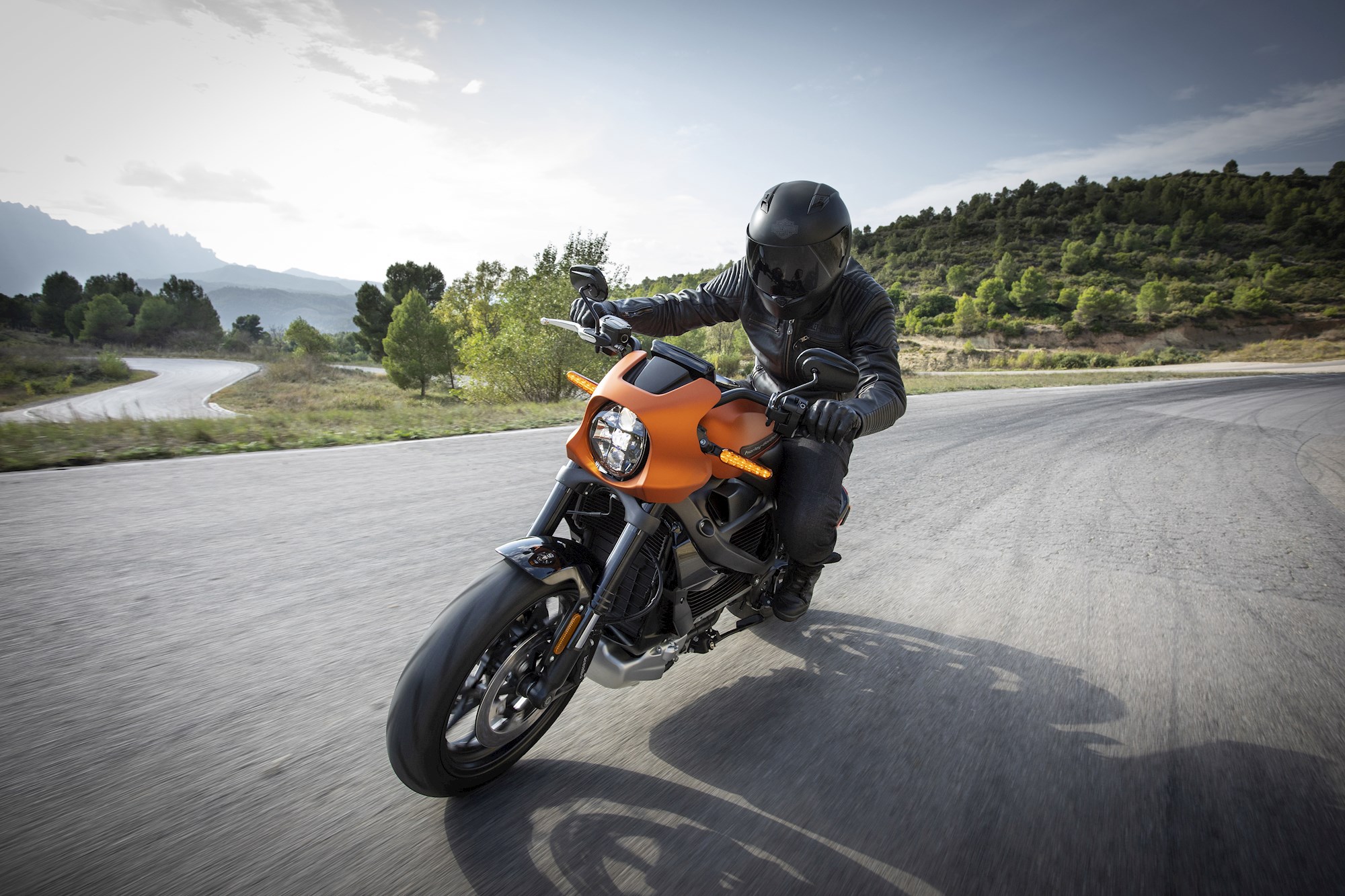
By Mathieu Day-Gillett from https://www.driven.co.nz
Who on earth expected that it would be Harley-Davidson that would become the first major motorcycle manufacturer to bring to market a fully electric bike?
Okay, all cards on the table, I’ve really been looking forward to riding Harley’s Livewire on behalf of DRIVEN and www.onthrottle.co.nz. In fact, I was lucky enough to have ridden the Livewire’s precursor – 2014’s Project Livewire – and I was so blown away by the bike that I gave it my Bike Of The Year gong for that year.
For the production model, all the rough edges have vanished and Harley has given the bike a charging port in the traditional fuel filler location.
The lightweight alloy frame no longer has a rough finish to it, and while I was at first sad to see the cool textured finish of the concept bike make way for the smooth new frame, I can appreciate that owners of the Livewire would struggle to clean such a thing. Imagine the damage to your trusty old sponge if you had to wipe it over the sandpaper-like finish of Project Livewire?
Other minor changes come in the form of a small fairing around the LED headlight unit, a new sub-frame with space for a pillion, a variety of colour options (our pick is the Yellow Fuse colour scheme), and rather importantly the addition of a numberplate carrier which integrates the rear tail light and indicators also.
Most importantly, however, the Livewire now has functioning rear-view mirrors. Yup, as cool looking as the mirrors on Project Livewire were, in terms of function all they gave you a good view of was your kneecaps.
But what we really want to know is how it rides. Thankfully, Harley-Davidson sorted us out with a guided ride around Portland, with some wicked twisty back roads thrown in for good measure to help us see what it is like to ride the Livewire in the real world.
While it was only a taste of what the ownership experience will be like, riding the Livewire was easily a highlight of my year in motorcycling.
The bike has four pre-loaded rider modes (Road, Sport, Rain and Range) which can be toggled on the fly and each gives the bike a noticeably different throttle response.
Make no mistake, this bike is FAST. With all its power and torque (78kW/105hp and 116Nm) available from 0rpm this thing accelerates like nothing else. Just twist the throttle and the bike shoots off at warp speed.
Linked into the Livewire’s systems is Harley’s first traction control system, which is connected with a six-axis IMU and the ABS brakes. The result is a system that offers the necessary safety net for a bike that has its full power capability from the touch of the throttle.
Our ride route took us from the stop-go of central Portland, out into the hills through some incredibly twisty roads before looping back at the end of the day.
I’ll admit that I was slightly worried about setting off immediately into traffic at the start of the day.
My biggest memory of Project Livewire was nearly dropping the bike in low speed conditions, but Harley has really dialled in the throttle response of Livewire to the point that you can roll along as slow as you like without feeling like you need to slip the non-existent clutch.
In fact, the Livewire is actually an incredibly easy bike to ride in general. It’s well set up with fully adjustable Showa suspension, Brembo brakes and that host of adaptable nanny aids which alter their settings depending on which rider mode you have selected.
Rain is the most constrained with the slowest throttle response, while sport is an absolute riot and actually lets the real wheel slip a bit.
I did feel adjusting the settings on the suspension would have been helpful when really pushing it, as the bike wasn’t quite happy with my fat ass and some of the rougher road surfaces (contrary to popular belief, the roads in the US have their fair share of potholes).
The bike never instilled any sense of being out of my control though and was incredibly confidence inspiring.
Can it wheelie? Probably, I’ll admit I didn’t really try. I will say I’m pretty sure you can do burnouts and annihilate the rear tyre with the traction control off (I will neither confirm or deny trying). Either way having full power from the touch of the throttle is a sensation that quickly becomes addictive.
I did find myself only really using two of the rider modes, Sport (for obvious reasons) and when the riding mellowed out I would switch to Range mode which allows the most battery regeneration when either braking or coasting.
Riding like a loon will obviously drastically reduce your battery range, and I arrived back at base with 32 per cent left, while a much more sensible Australian rider arrived back with nearly 50 per cent!
On merit alone I feel the bike will certainly attract its fair share of buyers. New Zealand pricing is $53,995, which may lock out much of the younger market Harley-Davidson is working hard to attract to its brand.
However, the Livewire is not a bike which Harley expects to sell like hotcakes. It is, instead, the halo product of a much wider range of electric motorcycles from the iconic brand.
In theory, there are another four bikes scheduled to debut below the Livewire in terms of spec and price point in the next two years or so and that is a really exciting prospect.
Is the Livewire another orphan from Harley? Hell no! This is the shock the motorcycling market needs.